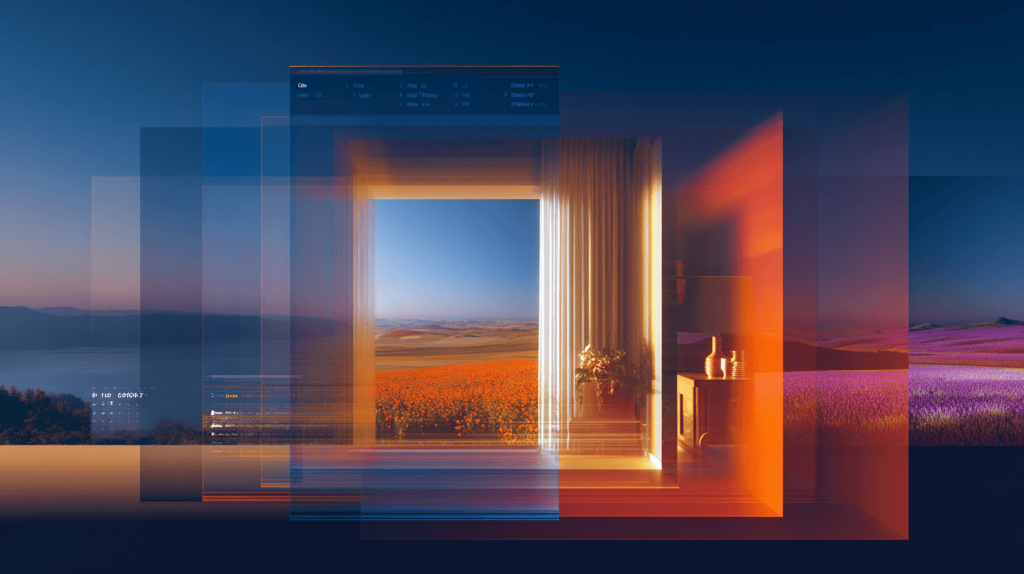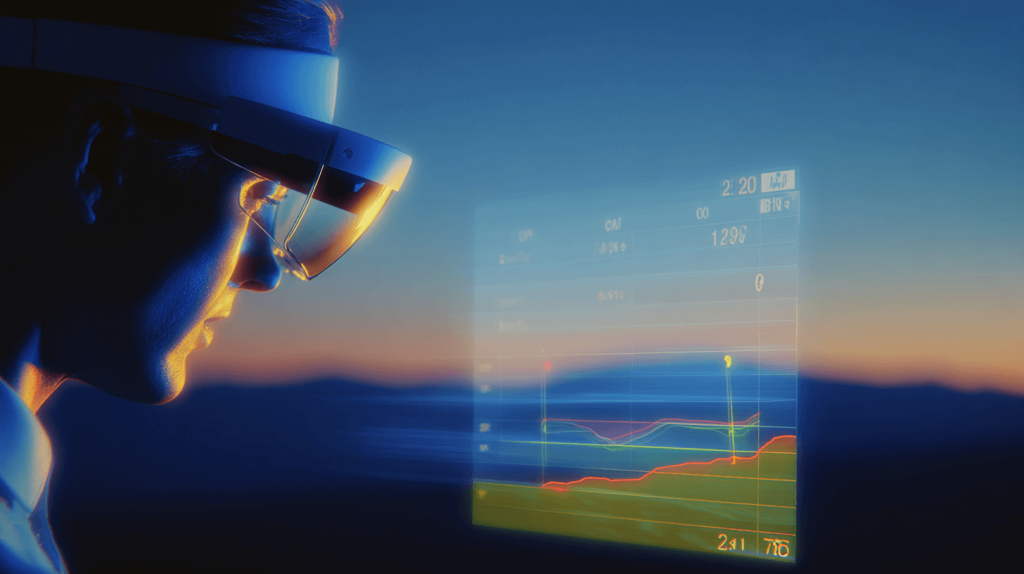Are you unsure whether to protect your software with a software patent vs copyright? Choosing the wrong type of intellectual property protection can lead to significant consequences, such as unauthorized use, loss of competitive advantage, and potential financial setbacks.
This article outlines the key differences between patents and copyrights for software products, helping you choose the best protection for your innovation and ensuring your work is properly safeguarded.
Key Takeaways
- Software intellectual property protection includes patents and copyrights, each serving distinct purposes: patents protect inventions and functionalities, while copyrights safeguard the specific source and object code.
- When choosing between a software patent and copyright, consider whether the software provides a technical solution (patent) or focuses on creative expression (copyright), as each offers different forms of intellectual property protection.
- Collaborating with an experienced software patent attorney is essential for navigating the complexities of patent applications and maximizing the chances of securing the necessary intellectual property protections.
Intellectual Property Protection for Software
Intellectual property (IP) protection for software ensures that developers and businesses can safeguard their innovations from unauthorized use, replication, or theft. Software, as a form of intellectual property, can be protected under both patent and copyright law, each serving distinct purposes.
Patents protect the functional aspects of software—such as algorithms, processes, and technical innovations—by granting inventors exclusive rights to their novel solutions. Copyrights, on the other hand, protect the specific expression of software, including its source code, user interface elements, and written documentation.
For software developers, understanding these protections is crucial for maintaining control over their creations, preventing competitors from copying their work, and maximizing the commercial potential of their products.
Understanding Software Protection: Software Patent vs Copyright
Software protection primarily falls under two legal frameworks: patents and copyrights.
- Patents protect the underlying functionality of software, such as innovative processes, system architecture, or AI-driven algorithms. This protection grants the patent holder exclusive rights to use, license, or commercialize the patented invention for up to 20 years.
- Copyrights safeguard the specific expression of software, including source code and written documentation. Unlike patents, copyrights do not protect ideas or functional processes—only the way they are expressed.
Choosing the right protection depends on the nature of the software. If the goal is to protect a novel technical process, a patent may be appropriate. If the concern is preventing unauthorized reproduction of code, a copyright is the best option. In many cases, a combination of both provides comprehensive legal protection.
Utility Patents for Software Inventions
Although often referred to as “software patents,” inventions related to software are actually protected under utility patents—the same category that covers mechanical or chemical inventions. Utility patents safeguard the functional aspects of software, such as the processes, algorithms, or system designs, rather than the specific programming code itself. This protection grants the inventor exclusive rights to make, use, sell, and distribute the software, as well as the ability to monetize it through licensing or acquisition.
For a software-related invention to qualify for a utility patent, it must meet certain statutory criteria:
- Novelty: Under 35 U.S.C. § 102, the invention must be new and not previously disclosed or known. If you’re still developing your software, consider filing a provisional patent application to protect it, or keep the work a trade secret.
- Non-obviousness: According to 35 U.S.C. § 103, the invention must not be an obvious improvement or modification of existing technologies to someone skilled in the field. Even if prior art contains similar elements, a combination that leads to a surprising or significant improvement may still be patentable.
- Usefulness: Under 35 U.S.C. § 101, the invention must be practical, rather than abstract or theoretical. It must fit within the eligible categories of patentable subject matter, which include processes (methods), machines, manufactures (physical goods), or compositions of matter.
What Types of Software Inventions Can Be Patented?
Not all software-related innovations qualify for patent protection. To be eligible for a utility patent, a software invention must meet the statutory requirements outlined by the U.S. Patent Act, including novelty, non-obviousness, and usefulness. Additionally, the invention must fit within one of the four categories of patentable subject matter: processes (methods), machines, manufactures (physical goods), or compositions of matter.
The United States Patent and Trademark Office (USPTO) applies rigorous standards when examining non-provisional patent applications. One of the key challenges in seeking patent protection for software is ensuring that the invention is not deemed too abstract. The USPTO will reject software patents that are based on abstract ideas or general concepts rather than specific, tangible applications.
For a software invention to meet patent requirements, applicants must clearly define the point of novelty, or the unique element that distinguishes their invention from prior art. Additionally, inventors must fully disclose both the enablement and best mode of practicing the invention. The best mode requirement, under 35 U.S.C. § 112, mandates that inventors provide the best-known method of implementing the invention. This is designed to prevent inventors from withholding superior methods or alternate ways of using their invention while still securing patent protection.
Understanding these principles is crucial for inventors in fields like artificial intelligence (AI), machine learning, and other software-driven technologies. It’s also important to remember that simply having a software-related idea or code is not enough to secure a patent; the software must demonstrate practical application and a concrete, inventive step.
The Patent Application Process for Software Inventions
The process for obtaining patent protection for software-related inventions involves several important steps. Here’s an overview of the procedure:
- Determine the Type of Patent Protection: Typically, utility patents are sought for software inventions. Patentable subject matter includes new methods, processes, machines, or compositions of matter. Design patents may be applicable for software inventions that focus on the unique design or graphical user interface (GUI) elements, such as icons, screens, or visual layout.
- Conduct a Prior Art Search: A key step before filing a patent application is conducting a thorough prior art search. This ensures that your software invention is novel and non-obvious, and useful. The search will help identify existing patents, published applications, non-patent literature and allow you to determine patent ability based on the prior art landscape. Additionally, a prior art search can guide you in drafting a comprehensive claim set by identifying how your invention differs from what has already been disclosed.
- Prepare the Patent Application: The patent application must provide a detailed description of your invention, outlining its functionality and how it works. It’s important to clearly demonstrate the technical and inventive aspects of your software, as well as its practical applications. This description must also highlight what makes your software novel and non-obvious. If applicable, include drawings, flowcharts, or diagrams to visually illustrate the software’s processes or components, which can help patent examiners better understand the invention and support your claim set.
- File the Patent Application: Once your application is complete, you can submit it to the USPTO. Make sure all forms are filled out correctly, and any applicable fees are paid. Upon submission, the USPTO will assign a patent examiner to review your application, and you will receive an official filing date.
- Wait for Review: After filing, the review process typically takes 17-20 months, though the pendency (waiting) time may vary. However, there are options to expedite the process. For example, you can file a Track One prioritized examination request or a petition to make special if you meet certain criteria, such as the invention’s impact on environmental issues or advancing technology in specific fields like artificial intelligence (AI).
By carefully following each step and ensuring thorough preparation, inventors can improve their chances of successfully obtaining patent protection for their software inventions, particularly in rapidly evolving fields like AI or machine learning.
How Does Copyright Protect Software?
Copyright protection for software begins as soon as the work is created and fixed in a tangible form. Unlike patents, which require a formal application process through the United States Patent and Trademark Office, copyright is automatically granted as soon as the software is written, recorded, or otherwise captured in a tangible medium. For software, this means that as soon as the code is written, it’s protected under copyright law.
However, it’s crucial to note that copyright protection does not extend to the ideas or functional aspects of the software. Copyright law only safeguards the expression of an idea, not the underlying concept or functionality. For example, while the specific code you write is protected, the underlying method or process that your software executes is not. This distinction is important because it means that others can create similar programs that perform the same functions without infringing on your copyright, as long as they write their own original code.
For software developers, registering a copyright is an important step to enhance legal protections. While copyright protection is automatic upon creation, registration with the U.S. Copyright Office provides additional legal benefits. It enables the copyright holder to pursue statutory damages and attorney’s fees in the event of infringement. Moreover, registering your software copyright can act as a deterrent to potential infringers, as it publicly records the copyright and establishes your claim to the work.
Although copyright protection does not cover functional elements, it remains a valuable tool for developers seeking to protect the creative expression within their software, including unique code, visual elements (such as UI/UX design), and other creative aspects.
Strategic Value of Software Patents
While securing a software patent can be a lengthy and expensive process, it offers significant long-term strategic value for software developers. The protection afforded by a utility patent ensures that the functional elements and software implementation is shielded from infringement. This means that competitors cannot reproduce or practice the underlying methods or processes used by your software, granting you a competitive edge in the marketplace.
One of the key advantages of software patents is their monetization potential. Developers who hold patents can license their innovations to third parties, creating consistent revenue streams while still owning the patent. Alternatively, patents can be sold to companies or investors seeking to incorporate your innovative methods into their products. This can significantly enhance the financial viability of a software startup or company, offering a direct return on investment.
Furthermore, a well-established patent portfolio can serve as a bargaining tool in negotiations with business partners, investors, or potential acquirers. It demonstrates your company’s commitment to innovation and can be leveraged in corporate transactions or mergers and acquisitions. In this way, patents provide leverage in securing funding and striking strategic partnerships, increasing the business’s long-term value while preventing competitors from reproducing your patented technology
Balancing IP Strategies
For software developers, balancing intellectual property strategies is key to protecting proprietary innovations. This involves considering both patent and copyright protection, as well as other forms of IP protection like trademarks. A well-balanced IP strategy can help prevent unauthorized use or theft of your software while enabling you to collaborate and share your work with others. By combining different forms of protection, developers can create a robust intellectual property protection, ensuring that their innovative creations are secure and that they can capitalize on their creative efforts.
Common Misconceptions About Patents and Copyrights for Software
There is a common misconception that software must be fully developed before filing for a patent. In reality, you can file a patent application for software innovations based on novel concepts and functionalities, even if the software completed or deployed. A well-prepared provisional patent application can cover ideas and innovations that are still in the developmental stage.
Another misconception is that copyright alone provides adequate protection for software. While copyright does protect the specific code and expressive elements of software, it does not cover the underlying functional methods, algorithms, or processes. This is where patents are essential, as they provide legal protection for these innovative functional aspects of software.
Misunderstanding the distinction between patents and copyrights can leave software developers vulnerable to unauthorized use of their intellectual property. A clear understanding of both forms of protection allows developers to make informed decisions about how to best safeguard their innovations.
When to File for a Patent
Timing is crucial when it comes to filing a patent application for software, as the United States operates under a “first to file” system. This means that the first person to file a patent application for an invention is entitled to the rights, rather than the first person to invent. For software developers, this reinforces the importance of securing a filing date as early as possible in the development process to prevent any late filed application from being time barred under 35 U.S.C. 102(a).
One of the most effective ways to establish a filing date early is by submitting a provisional patent application. A provisional application doesn’t require a formal patent claim, oath, or declaration, and it doesn’t undergo an immediate examination. However, it secures a priority filing date for your invention, which is crucial under the first to file system. The provisional application allows developers to continue refining their software while maintaining the right to file a non-provisional patent application (the formal patent application) within 12 months.
Filing a provisional patent is particularly beneficial for early-stage software development. It provides a safeguard against others filing a patent on similar ideas while giving you time to refine your concept and gather supporting data. Without securing that initial filing date, you risk losing priority to competitors who may file earlier.
Moreover, the provisional application also acts as a form of “patent pending,” which can be a valuable marketing tool or deterrent for competitors. However, it’s important to keep in mind that a provisional application does not itself result in a patent. A non-provisional application must be filed within 12 months to convert the provisional filing into a granted patent.
By filing early, developers are not only protecting their innovative software but also positioning themselves strategically in a competitive marketplace.
The Role of Open Source Software in Patent and Copyright Discussions
Open source software occupies a unique space in the intellectual property landscape. Developers release open-source software with the understanding that others can use, modify, and distribute it freely under certain licensing terms. While this creates a collaborative environment, it also raises important considerations for patent and copyright protection.
For software developers working in open-source communities, it’s crucial to understand the potential risks and rewards of combining open-source principles with intellectual property protections.
Copyrights and Open Source
Open-source software is typically protected by copyright as soon as it is created and fixed in a tangible medium, just like proprietary software. However, many open-source projects are released under licenses that outline the terms under which others can modify and distribute the code. Some of the most common open-source licenses include the GNU General Public License (GPL), the MIT License, and the Apache License, each of which has specific rules about how the software can be used, modified, and redistributed. Copyright protection ensures that developers retain control over how their code is expressed, but the open-source licenses grant users permission to access, modify, and share the code under agreed-upon conditions.
Patents and Open Source
While copyright protects the expression of the software’s code, it does not cover the underlying functional aspects or methods of operation. Patents can be used to protect these aspects of software. However, the intersection between patents and open-source software can be tricky. Open-source developers may choose to release their software with a patent grant, essentially allowing others to use patented technology within the software under certain conditions. A well-known example is the Apache License 2.0, which includes an express grant of patent rights from contributors to users.
Despite the patent protections available, developers may still face challenges. For instance, patent trolls—entities that acquire patents without the intent to develop or sell products—may target open-source projects, seeking to exploit patent rights for financial gain. As a result, some open-source communities actively discourage patenting by instituting “patent retaliation” clauses, which state that if a contributor sues the project for patent infringement, they lose their rights under the open-source license.
Navigating Open Source and Intellectual Property
For software developers participating in open-source projects or considering using open-source components, it’s important to ensure that any contributions are properly licensed and that there are no conflicts with patent rights. One approach to protecting software is to combine open-source licensing with patents or trade secrets for specific proprietary features, maintaining a balance between openness and legal safeguards.
Patentability of AI and Machine Learning Software
AI and machine learning (ML) technologies are driving some of the most exciting and innovative advancements in the software industry today. However, the growing prevalence of AI-driven inventions has raised important questions regarding patentability and intellectual property protection.
The Challenges of Patenting AI Innovations
AI and machine learning software often present unique challenges when it comes to patents. Traditional patent law was designed to protect inventions that are concrete and tangible, such as mechanical devices or processes. However, AI algorithms and models often involve abstract mathematical concepts and computational methods, which do not always fit neatly into the traditional categories of patentable inventions.
To be patentable, AI-related inventions must meet the same requirements as other technological innovations: they must be novel, non-obvious, and useful. However, patent examiners face difficulty when determining whether an AI invention is an “abstract idea” or if it constitutes a true technological advancement. The U.S. Supreme Court’s ruling in Alice Corp. v. CLS Bank International (2014) established a framework for determining whether an invention is too abstract to be patented. Under this framework, software innovations related to abstract ideas—such as general mathematical principles, mental processes, or basic algorithms—are typically not patentable.
For AI inventions to pass the patent eligibility test, they must demonstrate that they provide a tangible, practical application of the underlying algorithm. For example, an AI invention might be patentable if it involves a novel method of using machine learning to solve a specific problem in a new way (e.g., improving medical diagnoses, automating fraud detection in financial transactions, or optimizing supply chain logistics).
Patent Protection for AI Innovations
When an AI innovation qualifies for patent protection, the patent may cover various aspects, such as:
- Algorithms: A specific machine learning algorithm or method that improves efficiency, accuracy, or adaptability in processing data.
- Systems: A new AI-powered system, such as an intelligent robot or a self-driving vehicle, that uses machine learning to make decisions and improve performance.
- Hardware: In some cases, AI innovations may also involve hardware developments, such as specialized processors designed to accelerate machine learning tasks. Patents can cover new, unique hardware that supports AI applications.
AI innovations in areas like natural language processing (NLP), computer vision, and neural networks are becoming increasingly important, and the demand for patent protection for these technologies is growing. By obtaining patents, developers and companies can protect their proprietary methods and algorithms, prevent competitors from using their inventions, and monetize their intellectual property through licensing deals or acquisitions.
Protect Your Software With The RLG Guarantee
At The Rapacke Law Group, we stand behind our work with money-back guarantees on all prior art searches and provisional patent applications.
- Prior Art Searches: If our team determines that your AI agent is not likely patentable over the prior art, you will receive a full refund. If your AI solution is deemed patentable, we will credit the full cost of the search toward your patent application.
- Provisional Patent Applications: We are so confident in our ability to secure your priority filing date that we guarantee your provisional application will be accepted by the USPTO. If it is not, you get your money back.
This ensures that you can pursue patent protection with confidence, knowing that your investment is backed by our commitment to quality and success.
Work With An Experienced Software Patent Attorney
Engaging with a seasoned software patent attorney is crucial for effectively navigating the complexities of patent law and ensuring your software innovations receive the protection they deserve. During our complimentary initial IP strategy session, we’ll assess the most suitable type of intellectual property protection for your unique needs. We’ll guide you through each step of the IP protection process, address any questions you may have, and provide a clear, no-obligation flat-rate estimate.
As your patent lawyers, we possess the expertise to craft comprehensive applications that emphasize the unique aspects of your software, significantly increasing the chances of successful patent approval. This specialized knowledge is invaluable for you, as a developer looking to safeguard your intellectual property rights and establish a competitive edge in the market.
Don’t leave your innovations unprotected. Schedule your free strategy call today and take the first step towards securing your software
Summary
It’s essential to select the appropriate method of safeguarding your software to ensure that your intellectual property is secure and that you get the most out of your creative endeavors. The protections offered by software patents versus copyrights are distinct. Patents offer more comprehensive coverage for novel functions, while copyrights deliver a budget-friendly and instant means of protection for original expressive content.
Grasping the fundamental contrasts and benefits provided by these forms of protection allows developers to choose an option that best fits their business goals. Deciding between obtaining a patent or copyright requires careful consideration, but doing so proactively is crucial for ensuring lasting achievement in innovation.
Frequently Asked Questions
Which is better, copyright or patent?
The better choice between copyright and patent largely depends on what you seek to protect: copyright is ideal for artistic and literary works, while patents are suited for inventions and processes.
Therefore, evaluate the nature of your creation to determine what forms of intellectual property are the best fit.
What are the main differences between software patents and copyrights?
The main difference between software patents and copyrights lies in their scope of protection; patents cover the underlying systems and software, while copyrights focus on source and object code of your software.
Therefore, each serves a distinct purpose in protecting intellectual property.
How long does copyright protection last for software?
Copyright protection for software typically lasts for the life of the author plus 70 years, or up to 95 years for software created by corporations.
Thus, it is essential to consider the source of the software when assessing its copyright duration.
How can software patents be monetized?
Software patents can be monetized through licensing agreements, enabling other companies to use the patented technology through a licensing agreement or by selling the patent rights for immediate monetization.
What are the costs associated with obtaining a software patent?
Securing a software patent involves financial planning, as the cost ranges from $3,000 to $5,000 for a provisional application and $8,000 and $18,000 for a non-provisional patent application.




